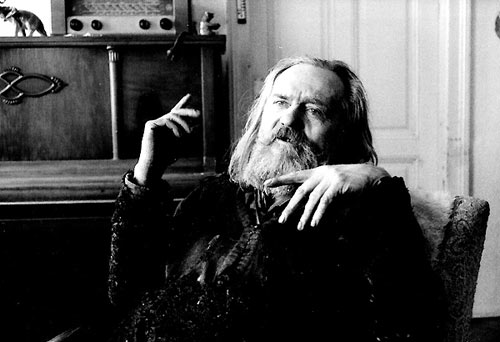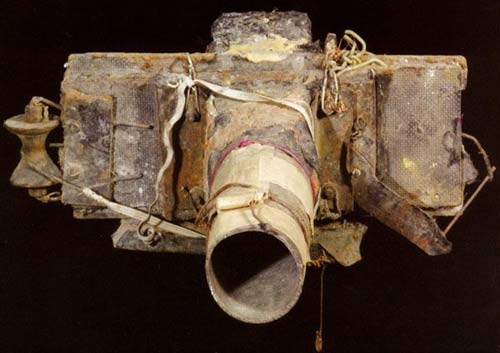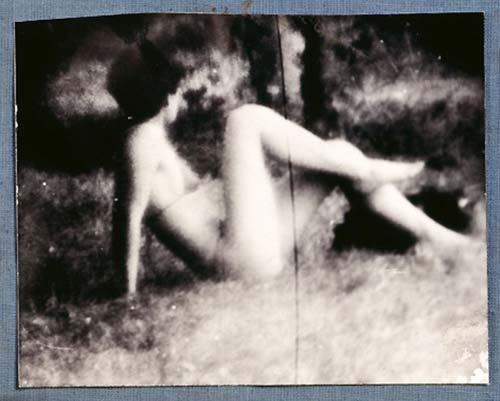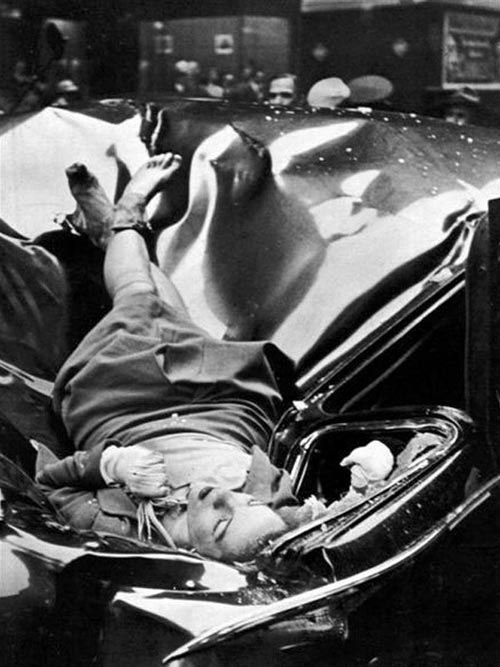kottke.org posts about photography
Absolutely scrumtrilescent photos of hurricanes from space. The Big Picture once again. I feel as though Alan is reaching directly into my brain and asking, “hey, what photos do you want to see next to flood you with high levels of dopamine?”
The Digital Journalist has launched a photo blog modeled after The Big Picture. Well done. I’ve followed this site on and off for years but always found it too difficult to navigate through to find the photography, which is shot by top-notch photojournalists and is amazing. Nice to see the photography put front and center. Case in point: this wonderful selection of sports photos by Walter Iooss Jr., punctuated by stories of the athletes he was photographing (Tiger Woods, Muhammad Ali, Michael Jordan, etc.). Here’s Iooss’ account of photographing Jordan at the 1988 dunk contest:
The problem with shooting the NBA slam-dunk contest was that you never knew how the players were going to dunk, especially Jordan. In 1997 [sic, it was actually 1987] he had twirled and dunked with his back to me. But by this time I knew him a little better. As he sat in the stands three hours before the contest, I said, “Michael, can you tell me which way you’re going to go, so I can move and get your face in the picture?” He looked at me as if I were crazy but then said, “Sure. Before I go out to dunk I’ll put my index finger on my knee and point which way I’m going.” I said, “You’re going to remember that?” And he said, “Sure.” So later, when they announced his name, I looked over to him on the bench and there was his finger pointing left. I got up and moved to the right side of the basket so I could see his face. He went left every time he dunked. On his last two dunks he ran the length of the court, took off from the foul line and slammed the ball through. On the next-to-last one he landed in my lap. On the last one I set up in the same spot. He looked at me as if to say, “Go left a little, give me some room this time.” And that was it, the picture was made: 1000th of a second frozen in time.
BTW, I’ve heard that The Big Picture has spawned a number of copycats around the web, including this one from the WSJ.
Three galleries of the best photos taken at the Olympics. Part 2 and part 3. NSFW.
Update: Caveat to the links above: all the photos above are lifted from elsewhere. You may prefer the collection at Big Picture instead. I’ve got mixed feelings about sites that take photos from other sites without proper attribution. On one hand, the photographers are not getting their due credit and payment for those photos but on the other, the act of collecting and curating adds something new to the work and results in something worthwhile. I wish there were a way for sites to make groups of photos like these without the hefty licensing expenses…the photographers get more of their photos out there and we get all sorts of neat views through the lenses of the photographers and talented curators. (thx, josh)
I found this New York magazine profile of fashion photographer Juergen Teller pretty fascinating. For one thing, none of Teller’s photos are retouched.
But perhaps most rare for fashion photography, Teller’s pictures are absolutely never retouched. “I’m interested in the person I photograph,” he says. “The world is so beautiful as it is, there’s so much going on which is sort of interesting. It’s just so crazy, so why do I have to put some retouching on it? It’s just pointless to me.”
And then there’s this anecdote. After a bad encounter with a subject who didn’t like how old she looked in Teller’s photographs, he went to see his friend Charlotte Rampling.
Despondent, Teller called his friend Rampling, who offered to cook him dinner. They talked about how it feels to be photographed, and how it feels to age. “I just thought, Fuck this, I’m going to photograph myself,” he says. And then there the two of them were, in the Louis XV suite of the Hotel de Crillon, with Teller way too fat to fit into any of the Marc Jacobs samples save one terribly shiny pair of silver shorts.
“I thought, Fuck,” Teller says, “I don’t even fucking fit into these clothes. I’m really fucking stuck now.”
So he pulled on the shorts in the bathroom. “I came out and I had my socks on and I had these shorts on and no top, and I just said, ‘Ta-da!’ And she said, ‘Oh my God. What are we going to do?’ And I said, ‘Well, I don’t know. But really, honestly’-and I could hardly bring it out of my mouth-I said, ‘I just want to kiss you and fondle your breasts.’ And she didn’t say a word. She just leaned back in her armchair and went into her handbag and got a cigarillo out and lit it and the air was thick and I was mortified. And then she sort of dragged on her cigarette and said, ‘Okay. Let’s start. I’ll tell you when to stop.’”
Here are some of the images that resulted from that shoot (NSFW).
Photos of disassembled household appliances.
this was my senior thesis project at the hartford art school this past year…i took apart used cooking/cleaning appliances, and arranged their interior parts very systematically on a white sheet of bristol board. my intention was to explore the hidden “brains” of these appliances; allowing us to view these everyday objects from a new perspective.
This is Miroslav Tichy, a Czech photographer:

This is one of Tichy’s homemade cameras, fashioned from cardboard tubing, string, and thread spools:

Here’s a photo taken with one of his homemade cameras:

Of the apparent quality of his photography Tichy says:
Photography is painting with light! The blurs, the spots, those are errors! But the errors are part of it, they give it poetry and turn it into painting. And for that you need as bad a camera as possible! If you want to be famous, you have to do whatever you’re doing worse than anyone else in the whole world.
Awesome. (via this is that)
Chimping is the practice of checking your just-taken photos on your DSLR’s LCD screen. (via textism)
Photographer Vincent Laforet, formerly of the NY Times, is in Beijing making photos of the Olympics. Here’s a look at some of the stuff he’s been shooting and the process behind getting those wonderful overhead shots of his.
Getting a photograph of Phelps from above is priceless — so it’s all worth the hassle. Here he is winning gold in the 200 meter individual medley. This was shot with a 400mm 2.8 handheld—oh yeah, hand holding a 12 pound lens ain’t easy. Luckily it was strapped to me — and I to the catwalk with oodles of safety cables. We weren’t allowed to being extra CF Cards or even a paper start list, which is pretty extreme if you ask me. We were patted down before we went up by the photo escorts, and we all tried to get things in — even our credentials were left behind. While extreme, I agree with one of the photo escorts who said that if even one sheet of paper floated harmlessly down from the catwalk. it would be game over for everyone — no more catwalk access.
You can keep up with Laforet’s Olympic output at his blog. (thx, stacy)
BLDGBLOG tells us about Library of Dust, a book of photographs of an Oregon state psychiatric institution.
Esteemed photographer David Maisel has created a somber and beautiful series of images depicting canisters containing the cremated remains of the unclaimed dead from an Oregon psychiatric hospital. Dating back as far as the nineteenth century these canisters have undergone chemical reactions causing extravagant blooms of brilliant white green and blue corrosion revealing unexpected beauty in the most unlikely of places. This stately volume is both a quietly astonishing body of fine art from a preeminent contemporary photographer and an exceptionally poignant monument to the unknown deceased.
This is a fantastic set of photos of old business signs, many of them neon. As Ben says, “is it possible to favorite every photo in a set at once?”
If you can brave the Flashcrapular flippa-dee-do-da interface, Evan Baden’s Illuminati photos are worth a look. They depict people’s faces bathed in the light of their computer screens, iPods, and video games. See also Phillip Toledano’s Video Gamers series. Toledano is also behind the fantastic Days with My Father. (via conscientious)
Update: Also see also Dennis Chamberlin’s Screen Culture photos. (thx, blaine)
I’ve been waiting patiently for this one. Big Picture has 27 photos of the Large Hadron Collider and they’re stunning. The scale of this thing, it’s overwhelming.
For his Faces of Evil project, Hans Weishäupl made composite photographs of the world’s worst dictators by photographing hundreds of people in each dictator’s country and stitching them together. The results are a bit disturbing, particularly when viewing very large, clear, vibrant color photos of long-dead monsters like Stalin or Hitler. (via conscientious)
The Natural History Museum in NYC has put a collection of historical photos online, including some fantastic images of the construction of some of their famous displays and dioramas. Pruned pulled out a few of the best for a recent post.
During the first decades of the 20th century, the AMNH posed its T. rex bones in an upright position, propped on its tail. Skeletons were broken, some bent and others removed altogether so that it looked like the “marauding predator” people thought they were. And also so that it didn’t look too diminutive in the large exhibition hall. Natural history as a function of architecture: it had to reach high up to the ceiling, fill up all that space, loom large over the crowds.
In order to create art for the 10,000-year Clock chamber, Edward Burtynsky has been investigating how to make photographic prints that last a long time.
Burtynsky went on a quest for a technical solution. He thought that automobile paint, which holds up to harsh sunlight, might work if it could be run through an inkjet printer, but that didn’t work out. Then he came across a process first discovered in 1855, called “carbon transfer print.” It uses magenta, cyan, and yellow inks made of ground stone-the magenta stone can only be found in one mine in Germany-and the black ink is carbon.
On the stage Burtynsky showed a large carbon transfer print of one of his ultra-high resolution photographs. The color and detail were perfect. Accelerated studies show that the print could hang in someone’s living room for 500 years and show no loss of quality. Kept in the Clock’s mountain in archival conditions it would remain unchanged for 10,000 years.
A year after her husband died, photographer Hilla Becher was interviewed by a German magazine about her work and her husband.
SZ: Why was your husband not interested in such photos?
HB: He rejected them because he was not interested in taking them. Actually, he was never interested in photography.
SZ: That is an unusual statement about a man who spent his whole life on it.
HB: Originally, Bernd did sketches. In the beginning, he sketched industrial landscapes. But he never managed to finish his work, because he was so precise. Often the object was demolished right in front of his eyes, back then heavy industry in the Siegerland was being abandoned for good. The demolishing, the decay happened faster than he could sketch it.
SZ: So then he took photos?
HB: Right. He borrowed a 35mm camera and took photos, to use them for his sketches. That’s how it started, photography as the means to an end.
The Bechers worked tirelessly to photograph all kinds of industrial machinery.
Photos and descriptions of some of the world’s neatest ghost towns. I’ve seen many of these elsewhere but hadn’t heard of this village in France before.
The small village of Oradour-sur-Glane, France, is the setting of unspeakable horror. During World War II, 642 residents were massacred by German soldiers as punishment for the French Resistance. The Germans had initially intended to target nearby Oradour-sur-Vayres and mistakenly invaded Oradour-sur-Glane on June 10th 1944. According to a survivor’s account, the men were herded into barns where they were shot in the legs so they would die more slowly. The women and children, who had been held in a church, all perished when their attempt to escape was met by machine-gun fire. The village was razed by the Germans afterward. Its ruins still stand today as a memorial to the dead and a reminder of the events that took place.
Seed Magazine has posted Noah Kalina’s photos of science labs at night. The Salk Institute is represented of course.
A collection of photos of things from around the world that cost $5.
To explore the relative value of five dollars we are collecting examples from around the world by asking people to submit photos of objects or services that cost the equivalent of $5.
(via clusterflock)
Photos of Mike Tyson’s abandoned mansion. What an odd house. Half of it is bathrooms & an indoor pool and looks like it was designed by Homer Simpson.
From what I can gather from these portraits, librarians are white, bearded if male, and have glasses.
On May 1, 1947, Evelyn McHale leapt to her death from the observation deck of the Empire State Building. Photographer Robert Wiles took a photo of McHale a few minutes after her death.

The photo ran a couple of weeks later in Life magazine accompanied by the following caption:
On May Day, just after leaving her fiancé, 23-year-old Evelyn McHale wrote a note. ‘He is much better off without me … I wouldn’t make a good wife for anybody,’ … Then she crossed it out. She went to the observation platform of the Empire State Building. Through the mist she gazed at the street, 86 floors below. Then she jumped. In her desperate determination she leaped clear of the setbacks and hit a United Nations limousine parked at the curb. Across the street photography student Robert Wiles heard an explosive crash. Just four minutes after Evelyn McHale’s death Wiles got this picture of death’s violence and its composure.
From McHale’s NY Times obituary, Empire State Ends Life of Girl, 20:
At 10:40 A. M., Patrolman John Morrissey of Traffic C, directing traffic at Thirty-fourth Street and Fifth Avenue, noticed a swirling white scarf floating down from the upper floors of the Empire State. A moment later he heard a crash that sounded like an explosion. He saw a crowd converge in Thirty-third Street.
Two hundred feet west of Fifth Avenue, Miss McHale’s body landed atop the car. The impact stove in the metal roof and shattered the car’s windows. The driver was in a near-by drug store, thereby escaping death or serious injury.
On the observation deck, Detective Frank Murray of the West Thirtieth Street station, found Miss McHale’s gray cloth coat, her pocketbook with several dollars and the note, and a make-up kit filled with family pictures.
The serenity of McHale’s body amidst the crumpled wreckage it caused is astounding. Years later, Andy Warhol appropriated Wiles’ photography for a print called Suicide (Fallen Body), but I can’t find a copy of it anywhere online. Anyone?
Update: A not-so-great representation of Warhol’s version of this photograph is available at Google Books. (thx, ruben)
Update: Here’s a better photo of Warhol’s print. (thx, lots of people)
Update: Here’s the page as it appeared in Life Magazine.
Update: Codex 99 did some research on McHale and her activities on the day she died.
The sales of stock photographs can tell you a surprising amount about what’s going on in the world but they can’t predict the future.
“We had a bad day when Dolly was cloned,” says Denise Waggoner, vice president of creative research at Getty. “We hadn’t been studying biotechnology, and suddenly everyone wanted a shot of 25 sheep on a seamless white background. So now we try to keep our toes dipped in the water in lots of different fields, so we can be ready.”
Newer posts
Older posts









Stay Connected